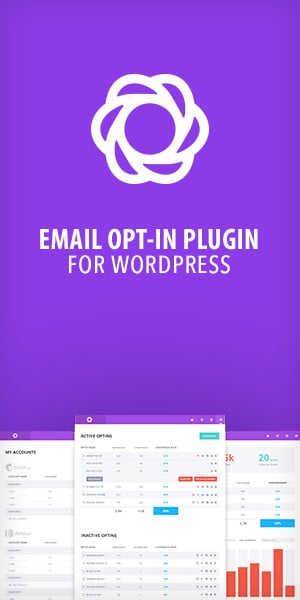Optimize website for Google SEO to improve visibility and drive more traffic, an essential move since 75% of users never scroll past the first page of search results. This guide will delve into key strategies, from keyword research to technical SEO, all crucial for staying ahead in search rankings. By implementing these tactics, your site can become more competitive in the digital landscape, compelling users to engage with your content.
Understanding Google’s SEO Algorithm
Understanding Google’s SEO algorithm is crucial for anyone looking to improve their website’s visibility in search results. Google’s algorithm determines how web pages are ranked, affecting visibility and traffic. This section will guide you through the core aspects of Google’s algorithm, helping you comprehend its components and implications.
Importance of Google’s Search Ranking Factors
Google’s search ranking factors are the backbone of SEO. These factors decide which websites appear at the top of search results. Important elements include keyword relevance, website authority, and user experience. Each factor contributes uniquely to ranking, making it vital to address them collectively for optimal performance.
Key Ranking Factors
- Relevance of content to search queries
- Quality and quantity of backlinks
- Page load speed and mobile-friendliness
- User engagement metrics like click-through rates
Focusing on these elements can enhance your website’s authority and visibility. Ensuring your content matches search intent and optimizing technical aspects are critical steps. By strategically improving these factors, your website can achieve better search rankings.
How Google’s Search Algorithm Updates Affect SEO
Algorithm updates can significantly impact SEO strategies. Google frequently updates its algorithm to provide more relevant search results. These updates often prioritize user experience, emphasizing quality content and mobile compatibility. Staying informed about changes is key to maintaining strong SEO performance.
Effects of Algorithm Updates
- Shifts in keyword rankings and visibility
- Changes in backlink value and authority
- Increased emphasis on mobile and speed optimization
Adapting to these updates requires continuous monitoring and flexibility. Regularly reviewing website analytics can reveal how updates affect your site. Implementing changes based on these insights ensures your strategy aligns with the latest algorithmic priorities.
Interpreting Google’s Webmaster Guidelines
Google’s Webmaster Guidelines provide a roadmap for ethical SEO practices. These guidelines outline best practices for creating content and maintaining website quality. Following them helps avoid penalties and improve search visibility.
Core Principles of Webmaster Guidelines
- Creating valuable, original content for users
- Building a site with clear hierarchy and text links
- Avoiding deceptive practices and hidden links
Webmaster Guidelines emphasize user-centric content and transparency. Prioritizing these principles can lead to improved trust and rankings. Regularly consulting the guidelines ensures your practices remain compliant with Google’s standards.
On-Page SEO Tactics for Improved Google Rankings
On-page SEO tactics are essential for enhancing your site’s visibility on Google. Through strategic adjustments and content optimization, you can significantly improve your website’s ranking. This section covers key on-page elements that can elevate your SEO game.
Optimizing Meta Tags for Better Visibility
Meta tags play a pivotal role in on-page SEO. They provide search engines with brief information about a page’s content. Effective meta tags can improve visibility and click-through rates.
Key Meta Tags to Optimize
- Title Tags: Include primary keywords and keep them concise
- Meta Descriptions: Use compelling summaries with a call-to-action
- Header Tags: Organize content with relevant keywords
Optimizing these tags ensures search engines and users understand your content’s relevance. Consistently updating and testing tag effectiveness can lead to higher search rankings and better user engagement.
Crafting High-Quality Content for SEO Performance
High-quality content is the cornerstone of successful SEO. It attracts and retains users while signaling relevance to search engines. Crafting content that resonates with your audience enhances both engagement and rankings.
Elements of High-Quality Content
- Original, valuable insights or solutions
- Well-researched and factually accurate information
- Engaging and easily readable format
- Incorporation of relevant keywords naturally
Focusing on these elements ensures your content meets both user needs and search engine criteria. Regularly updating content to reflect current trends and insights can sustain long-term SEO success.
Best Practices for Internal Linking Structures
Internal linking structures are vital for SEO and user experience. They help distribute authority across your site and guide users to related content. Effective internal linking enhances site navigation and search engine understanding.
Internal Linking Strategies
- Use descriptive anchor text for links
- Link to relevant pages with high authority
- Ensure a natural flow of links within content
Implementing these strategies strengthens your site’s architecture and boosts SEO performance. Regular audits of internal links ensure they remain effective and relevant. This continuous improvement fosters a more cohesive user journey and enhances search engine indexing.
Technical SEO Strategies to Enhance Website Performance
Technical SEO strategies are crucial for optimizing website performance. They ensure your site is accessible, fast, and easy to navigate. This section outlines the key technical aspects to focus on for improved search engine rankings.
Ensuring Website Mobile-Friendliness and Speed
Mobile-friendliness and speed are critical ranking factors. With more users on mobile devices, a responsive design is essential. Similarly, fast load times improve user experience and SEO performance.
Steps to Optimize Mobile and Speed
- Adopt a responsive web design
- Compress images and enable browser caching
- Use accelerated mobile pages (AMP) for faster loading
Implementing these measures enhances both mobile usability and load speed. Regular testing with tools like Google PageSpeed Insights can identify further optimization opportunities. A seamless mobile experience boosts user satisfaction and search engine rankings.
Implementing Structured Data for Rich Snippets
Structured data is a powerful tool for enhancing search visibility. It helps search engines understand your content and can lead to rich snippets. These snippets improve click-through rates by providing detailed information directly in search results.
Types of Structured Data
- Schema markup for articles, recipes, and reviews
- Event markup for dates and locations
- Product markup for prices and availability
Implementing structured data can significantly impact how your content appears in search results. Using Google’s Structured Data Testing Tool ensures your markup is correct. Well-implemented structured data leads to higher engagement and improved rankings.
Improving Website Crawlability and Indexing Efficiency
Crawlability and indexing are fundamental for SEO success. Search engines need to access and understand your content to rank it. Improving these aspects ensures your site is fully indexed and visible in search results.
Enhancing Crawlability
- Create a comprehensive XML sitemap
- Fix broken links and avoid duplicate content
- Ensure a clean and structured URL hierarchy
Optimizing these elements helps search engines crawl and index your site efficiently. Regular site audits can identify crawl issues and opportunities for improvement. Enhancing crawlability ensures your content reaches its full potential in search rankings.
Conclusion
Understanding Google’s SEO algorithm is crucial, emphasizing the significance of ranking factors and the impact of algorithm updates. Interpreting Google’s Webmaster Guidelines helps align website practices with SEO goals. On-page SEO techniques include optimizing meta tags, creating high-quality content, and establishing effective internal linking structures. Technical SEO strategies involve enhancing mobile-friendliness, increasing website speed, and using structured data for rich snippets. Improving crawlability and indexing efficiency is vital for better search engine performance.
FAQ
What are the best practices for optimizing website content for Google SEO?
Craft content that’s engaging and valuable for your audience. Use relevant keywords naturally within your text, titles, and meta descriptions. Ensure your site is mobile-friendly, as mobile optimization is key. Utilize header tags effectively and optimize images with alt text. Regularly update your content to keep it fresh and relevant.
How can I improve my website’s search engine ranking with Google’s SEO guidelines?
Follow Google’s SEO guidelines by focusing on high-quality content and earning backlinks from reputable sources. Optimize your website’s technical elements like site structure and navigation. Ensure your website’s content is relevant and meets user intent. Regularly monitor your website’s performance and make data-driven improvements.
What role do keywords play in Google SEO optimization for websites?
Keywords act as the bridge between user queries and your website. They help search engines understand your content’s topic. Use a mix of short-tail and long-tail keywords for a balanced approach. Conduct keyword research to find terms your target audience is searching for, and integrate them naturally into your content.
How does site speed influence Google SEO and website ranking?
Site speed directly impacts user experience and search rankings. Faster websites keep users engaged, reducing bounce rates. Google favors sites that load quickly, as they’re likely to provide a better user experience. Optimize your images, leverage browser caching, and minimize CSS and JavaScript to improve speed.
What are the most effective on-page SEO strategies for Google in 2023?
Focus on publishing high-quality, informative content that meets user intent. Use header tags to structure your content and enhance readability. Optimize meta tags and URLs with relevant keywords. Enhance user experience with clear navigation and responsive design. Utilize internal linking to guide visitors and boost SEO.
How can I use Google Analytics to enhance my website’s SEO performance?
Google Analytics provides insights into user behavior and traffic sources. Track which keywords drive traffic to your site and identify high-performing pages. Use this data to refine your content strategy and improve user engagement. Monitor metrics like bounce rate and session duration to identify areas for improvement.




